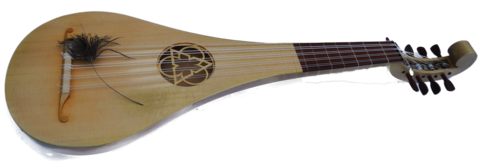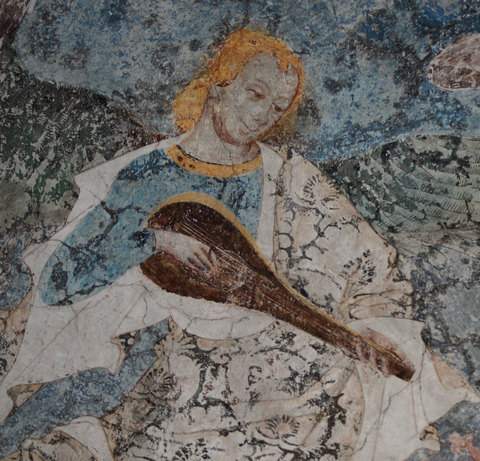Gittern

- I-FZc Ms. 117
The gittern is sometimes called the “little sister” of the lute and in iconography is often found in ensemble combinations with its bigger relative. It came together with the lute from Arabic origins and can already be seen paired with the lute in the earliest depictions from 12th-century Sicily. Its name is, as with many stringed instruments (see: guitar, citole, cetra, etc), a folk etymological appropriation of the Greek term “kithara” (via Arabic “qitara”). Unlike the initially mostly fretless lute, the gittern appears to have had frets as soon as it was taken over by Christian players. Its strings originally ran over a floating bridge and were attached to the end of the instrument. By the 15th century, probably in seeking to approach the sound of its companion instrument, the lute, illustrations showing a glued-on (lute) bridge become more frequent. In earlier depictions of the 13th and 14th centuries the typical sickle-shaped pegbox is usually crowned by an animal’s head, while later iconography of the 15th century tends to show a scroll. The body, like that of the vielle, was constructed monoxylically, i.e. hollowed out out of one piece of wood.
Recording taken with kind permission from the CD “Hör, kristenhait!”, Ensemble Leones, Christophorus 2015. Indescort is a keyboard intabulation (in the Italian tablature manuscript I-FZc Ms. 117) of the anonymous chanson “A discort sont desir et esperance” (c. 1380), of which there is also an arrangement in the Buxheim Organ Book under the title “Virginem mire pulchritudinis”.

